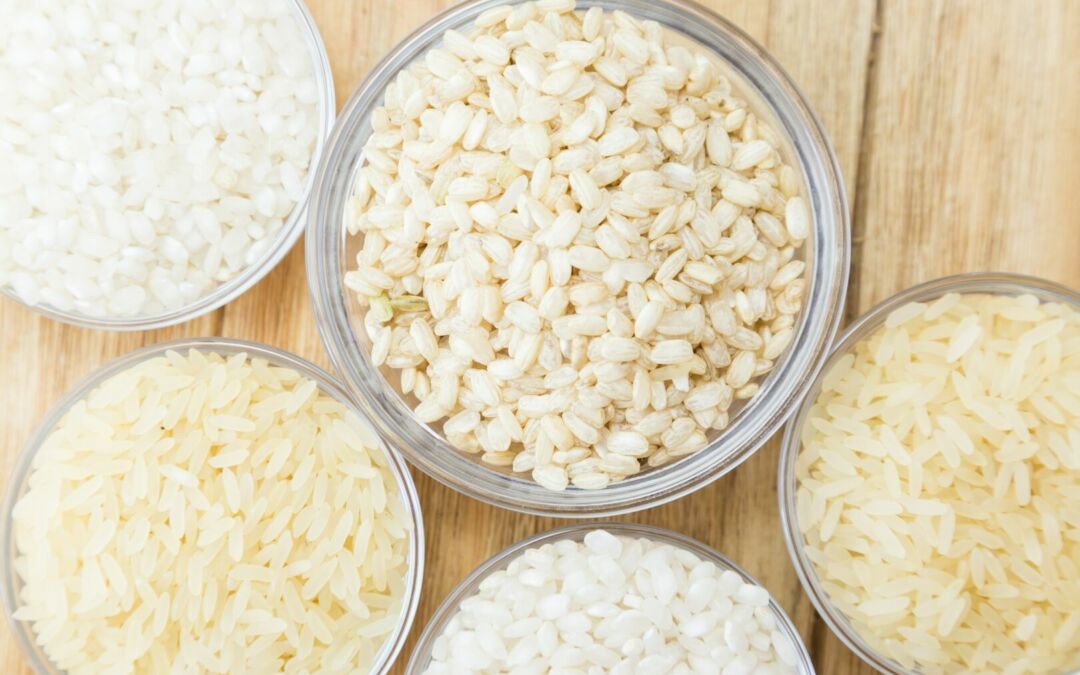If you’ve ever stopped to take a look at just how many different types and varieties of rice there are in your local grocery store aisle, you’ll know there are more than a few. And it can often be a little overwhelming trying to tell the difference between them all. So, to make things easier, we’ve put together a quick guide to rice so that you can learn how to choose which rice variety is best for your next recipe and avoid making any mistakes like having mushy rice or sticky rice in your rice salad.
Let’s start with the basics.
Rice Length
The first thing you need to know about rice is that it comes in 3 main lengths: long grain, medium grain and short grain. Long grain rice tends to cook up light, fluffy and separate when cooked rather than clumping together. Medium grain rice tends to cook up moist and tender while short grain rice tends to clump together when cooked and forms what is called glutinous rice. Although all rice is naturally Gluten Free, glutinous refers to its glue-like or sticky rice texture.
Long Grain Rice
So, now that you know about the length and properties of long grain rice, how can you find it and what can you do with it?
White Rice
Mahatma® Extra Long Grain White Rice is a traditional variety for cooking and highly versatile as it has a neutral flavor and a light and fluffy texture with a starchy composition. For best results, use white rice in your stir fries, casseroles, rice pilafs and stuffings. It works perfectly for everything from a simple Street Corn and Rice side dish to making Fluffy Rice Pancakes for breakfast.
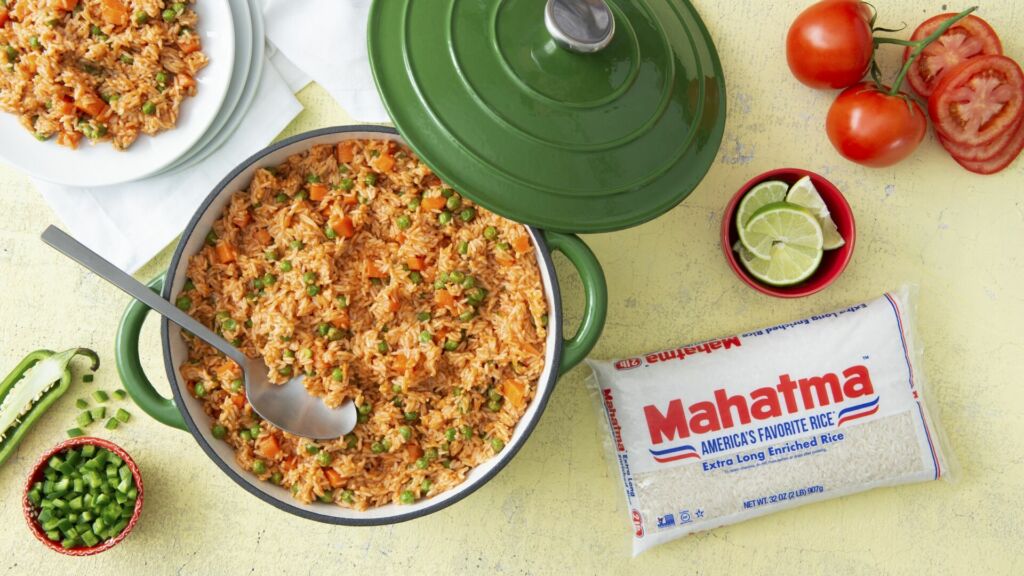
How to cook White Rice? 2 cups of water per each cup of rice, (2:1) ratio.
Brown Rice
Mahatma® Brown Rice has a signature brown color because it is 100% whole grain and harvested with its cereal and bran layer intact, giving it a more nutty flavor and chewy texture. When cooked, the long grain rice stays fluffy and separate making it perfect for casseroles, salads and stuffings. As it adds a whole grain touch to meals, many prefer this rice variety for rice salads like this Mango Chicken Rice Salad with fresh greens.
How to cook Brown Rice? 2 ¼ cups of water per each cup of rice, (2¼:1) ratio.
Basmati Rice
Mahatma® Basmati Rice is a flavorful and aromatic variety and when cooked, the long grains stay slender and separate making it perfect for stuffing, rice salads and even rice puddings. In fact, the traditional recipe for Arroz con Leche, or rice pudding, is made using these rice grains for their ability to absorb all of the delicious sweet flavors of the creamy milk, cinnamon and sugar.
How to cook Basmati Rice? 1¾ cups of water per each cup of rice, (1¾:1) ratio.
Thai Jasmine Rice
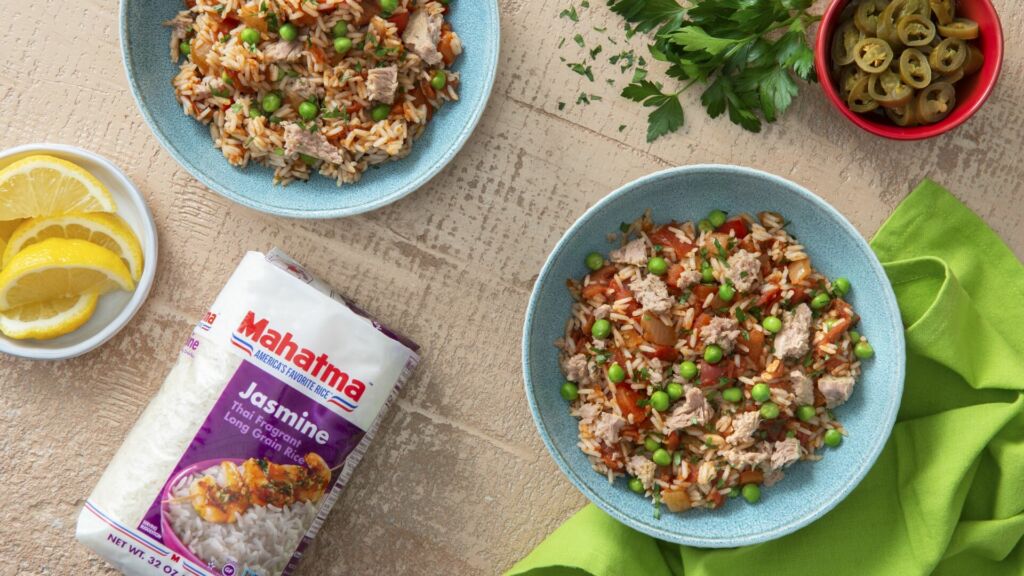
Mahatma® Thai Jasmine Rice is traditionally grown in Thailand, where it gets its name. This variety is another long grain rice with an aromatic, floral and exotic flavor that cooks up moist with a soft texture perfect to pair with spices in a rice pilaf, rice salad, stir fry or fried rice dish. As the long grains stay separate when cooked, the flavor is distributed evenly making it ideal for a dish of Jasmine Rice with Tuna and Tomato.
How to cook Jasmine Rice? 1½ cups of water per each cup of rice, (1½:1) ratio.
Medium grain
Our next rice length is shorter and wider than long grain rice and is considered medium on the stickiness scale, making it ideal for both creamy Italian risottos and savory Spanish Paella dishes.
Arborio
Although it is now grown in many parts of the world, this rice variety is native to Italy and most commonly found in traditional Italian comfort foods like Risotto. For this rice, it is advised to not rinse beforehand as it contains necessary starches that are released when heat is added giving the dish a creamy texture. Mahatma® Medium Grain Arborio Rice is specially crafted for risottos like this Chorizo and Manchego Risotto.
How to cook Arborio Rice? 2 cups of water per each 1 cup of rice, (2:1) ratio.
Parboiled Medium Grain
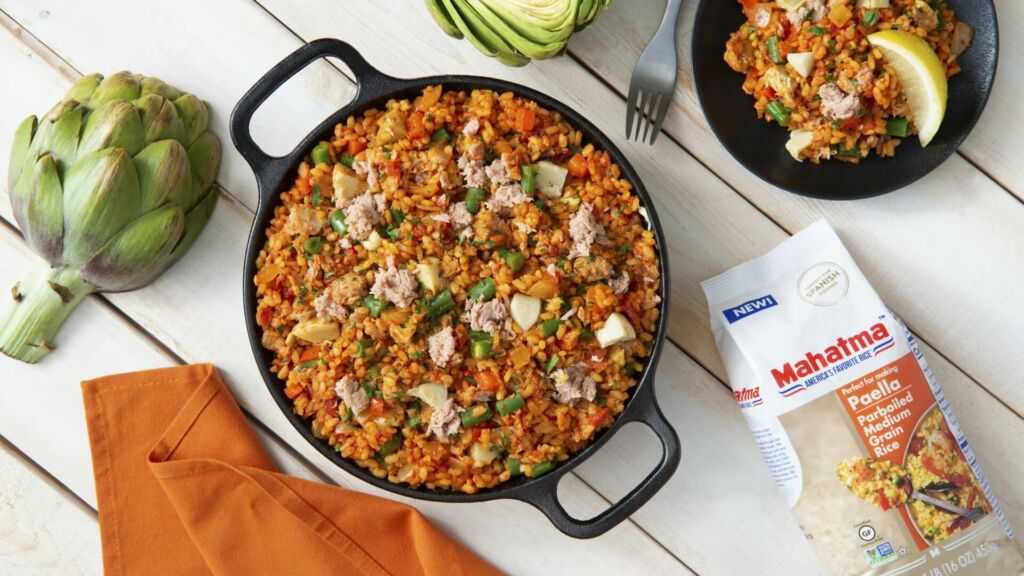
Mahatma® Parboiled Medium Grain Rice is partially cooked in its inedible husk to help maintain a higher content of nutrients. This variety cooks up tender and slightly chewy with a delicious taste perfect for a Spanish Paella dish as it absorbs all of the delicious flavors.
How to cook Parboiled Rice? 2 cups of water per each 1 cup of rice, (2:1) ratio.
Short Grain
Our third length is the roundest, shortest and widest of the three varieties and by far the stickiest. This is the rice you want to use when making sushi or rice balls.
Glutinous Rice
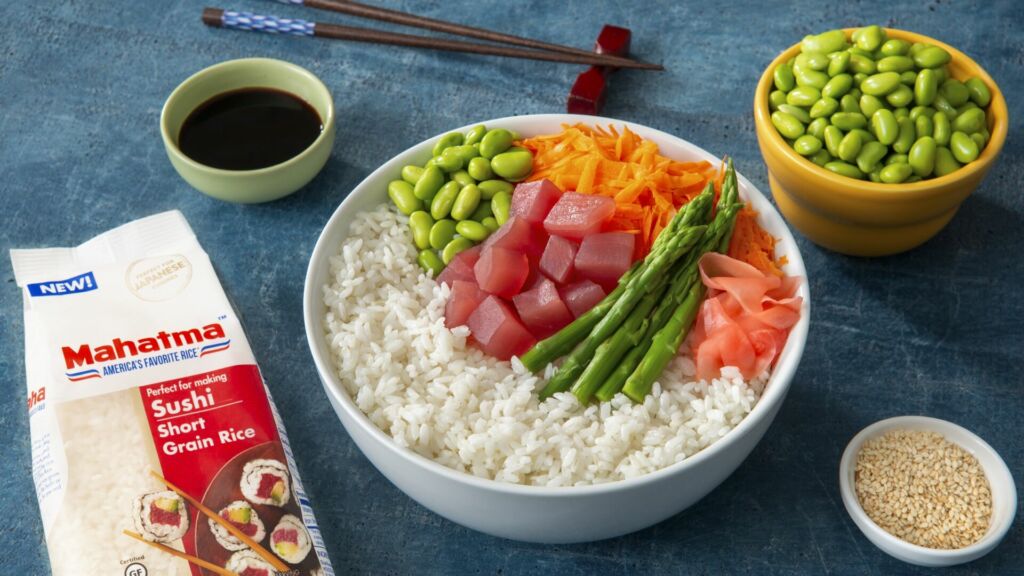
This rice tends to cook up softer and the starch content helps it to bind, becoming more compact, making it perfect for sticky rice and making rolled foods like sushi or onigiri. Use Mahatma® Short Grain Rice to make your next Vegetarian Sushi Roll or if you’re not quite up to the challenge, start out with something tasty and simple like a Tuna Poke Bowl with Sticky Rice.
How to cook Sushi Rice? 1½ cups of water per each 1 cup of rice, (1 ½:1) ratio.
For cooking tips like how to cook rice with coconut milk, visit our website.
